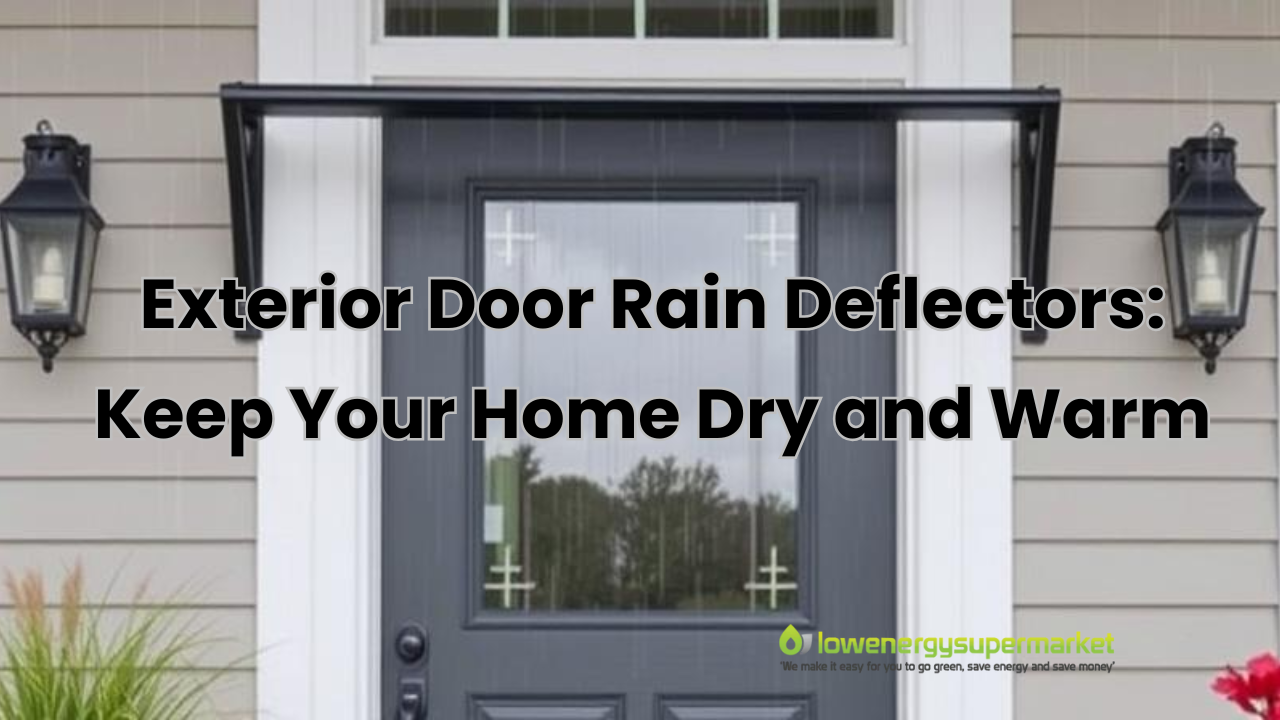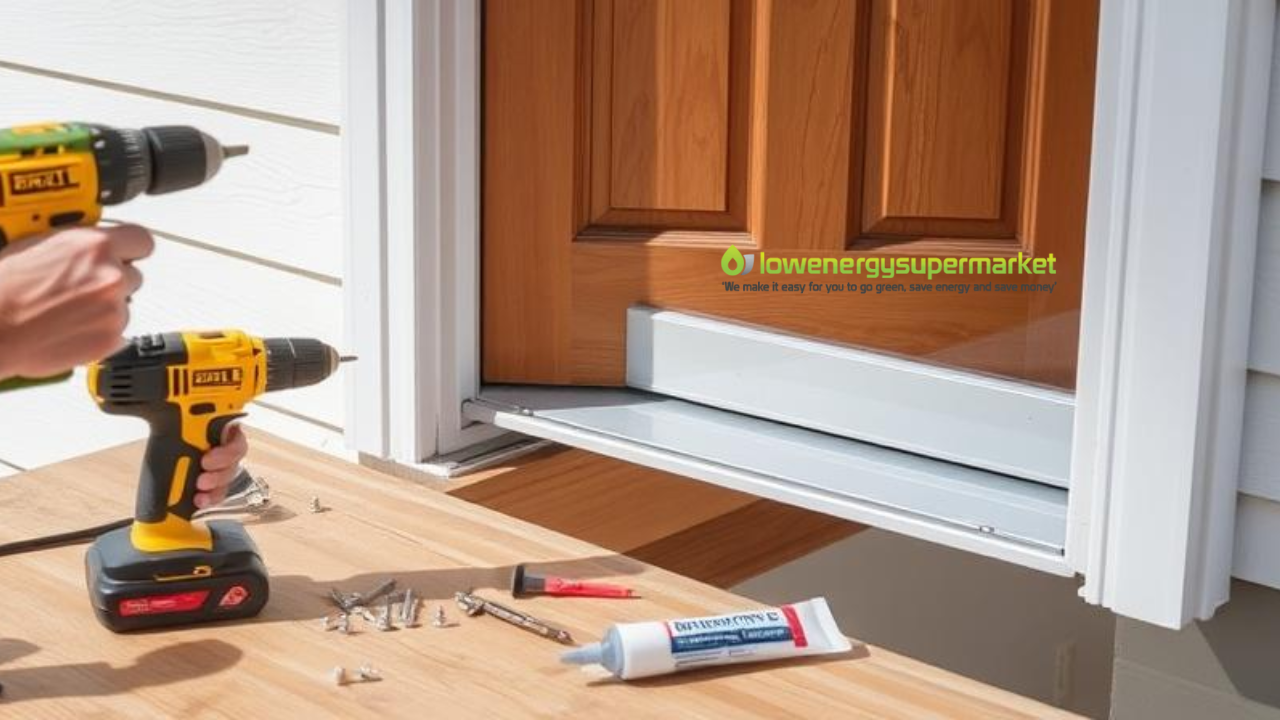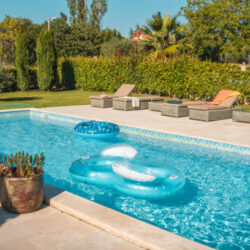In an era when energy efficiency, sustainability, and home comfort are top priorities, small upgrades can make a big difference. From loft roof insulation to thermal pipe insulation, every improvement helps create a more resilient, energy-smart home.\

One often-overlooked feature is the exterior door rain deflector, a simple yet highly effective addition that keeps rainwater, drafts, and cold air out of your home. As modern homeowners adopt energy saving products like energy efficient LED bulbs, tap aerators, and solar power cables, a rain deflector offers another way to conserve energy and protect your property.
This guide explains what an exterior door rain deflector is, how it works, its key benefits, and how to install it for long-lasting comfort and savings.
What Is an Exterior Door Rain Deflector?
An exterior door rain deflector (also called a weather drip bar or rain guard) is a protective strip, usually made from aluminum, stainless steel, or durable plastic, designed to deflect rainwater away from your door’s threshold.
It forms part of a home’s overall weatherproofing system, working alongside seals, draught excluders, and threshold plates. When properly fitted, a rain deflector prevents rainwater from seeping under the door, which helps to maintain warmth, reduce moisture damage, and extend the life of your entryway.
Key Components
- Deflector Bar – The angled section that channels rain away from the door.
- Fixing Screws and Sealant – To secure and seal the bar in place.
- Drip Edge or Lip – Helps water flow away from the door base instead of pooling.
Suitable for both residential and commercial doors, these devices are especially useful for external entrances exposed to harsh weather or direct rainfall.
How Does an Exterior Door Rain Deflector Work?
A rain deflector works by redirecting rainwater runoff. Its angled design channels water away from vulnerable door seams and thresholds, preventing seepage into the interior.
Here’s how it functions step-by-step:
- Rain hits the door surface.
- The deflector bar, installed above or below the threshold, catches the runoff.
- Water is directed outward and downward, away from the door base.
- The deflected water drips safely onto the step or drain channel instead of infiltrating under the door.
Practical Example
If you have a timber front door exposed to strong rain, a deflector prevents moisture from soaking into the wood, reducing swelling, rot, and heat loss. Combined with other energy saving products like LED dimmer switches, countdown timer plugs, or immersion timers, you can significantly enhance your home’s efficiency and comfort.
Key Features and Benefits of Exterior Door Rain Deflectors
1. Superior Weather Protection
Stops rain, sleet, and snow from seeping into your home, preventing water damage and dampness.
2. Improved Energy Efficiency
By reducing drafts and moisture, a rain deflector helps retain indoor heat, similar to how radiator panels or loft roof insulation improve energy performance.
3. Cost Savings
Lower heating costs by preventing cold air infiltration and avoiding expensive door repairs due to water damage.
4. Simple Installation
Most models are DIY-friendly, requiring only basic tools and no specialized expertise.
5. Enhanced Durability
Made from corrosion-resistant materials, ensuring long-term performance even in coastal or high-rainfall areas.
6. Eco-Friendly Impact
By reducing wasted energy and prolonging building materials, they contribute to sustainable living, aligning with modern eco initiatives like solar water heating kits and wind turbine generator kits.
Advantages Over Traditional Weatherproofing Options
Older door seals or brushes can degrade over time, letting water and air pass through. An exterior rain deflector offers:
- Better rainwater control with a physical barrier rather than absorbent materials.
- Longer lifespan compared to rubber seals.
- Less maintenance than threshold draught excluders.
- Aesthetic appeal, with modern aluminum finishes matching other exterior fittings such as victorian clothes airers or pulley clothes airers in heritage-style homes.
When paired with other innovations like monocrystalline solar panels, lithium battery lifepo4 systems, and battery chargers and inverters, it becomes part of a holistic energy-smart household.
Installation or Setup Guide
Installing a door rain deflector is simple and takes less than an hour for most DIYers.
Step-by-Step Installation:
- Measure the Door Width: Choose a deflector slightly longer than your door width.
- Mark the Mounting Line: Use a pencil to indicate where the deflector will sit (above or below the door threshold).
- Drill Pilot Holes: Ensure alignment is straight for a watertight fit.
- Apply Sealant: Add a bead of waterproof sealant behind the deflector.
- Secure with Screws: Tighten evenly to avoid gaps.
- Test with Water: Pour a small amount of water to confirm runoff direction.
Tip: For doors exposed to extreme weather, consider professional installation to guarantee maximum sealing performance.
Tips to Maximize Efficiency and Performance
- Inspect Seasonally: Check for loose screws or worn sealant every six months.
- Combine with Other Energy-Saving Upgrades: Use energy saving bulbs, low flow showerheads, or a shower timer to further cut costs.
- Keep Drainage Clear: Ensure the area below the door is free from debris.
- Reapply Sealant: Refresh waterproof sealant every few years for lasting protection.
- Install Photocells for Lighting: Automated photocells for lighting help outdoor fixtures work efficiently alongside your deflector system.

Common Mistakes to Avoid
- Installing Too Low: Can obstruct door operation or collect water.
- Skipping Sealant: Leads to leaks even with proper alignment.
- Ignoring Surface Preparation: Dirt or uneven surfaces can break the seal.
- Using Incompatible Materials: Match the deflector metal to your door frame to avoid corrosion.
- Neglecting Regular Maintenance: A quick seasonal check prevents long-term issues.
FAQs About Exterior Door Rain Deflectors
1. Can I install an exterior door rain deflector myself?
Yes. Most models come with screws and instructions. Basic DIY skills are sufficient for wooden or metal doors.
2. Does it really improve energy efficiency?
Absolutely. By preventing drafts and moisture, it supports consistent indoor temperatures, working in harmony with other energy efficient LED bulbs and insulation upgrades.
3. Is it compatible with all door types?
Yes, including timber, uPVC, aluminum, and composite doors. Adjustable models suit varied thresholds.
4. Can it be used with smart home systems?
While not a digital device, it complements smart home efficiency efforts, for example pairing with a water heater timer switch or LED tube light for energy management.
5. How long does it last?
High-quality aluminum deflectors can last over 10 years with minimal maintenance.
6. Is professional installation worth it?
If you have uneven stone or brickwork, professional fitting ensures a perfect, watertight seal.
Conclusion: Small Upgrade, Big Impact
An exterior door rain deflector may seem like a minor addition, but it delivers powerful results, keeping your home dry, warm, and energy efficient. When paired with other modern energy saving products such as best energy saving light bulbs, flow restrictors, battery lithium 12v storage, or solar power cables, it forms part of a smart, sustainable living strategy.
If you’re upgrading your home for better comfort, weather protection, and lower energy bills, don’t overlook this simple yet effective solution. Protect your investment and embrace a drier, warmer, and more efficient home today.



